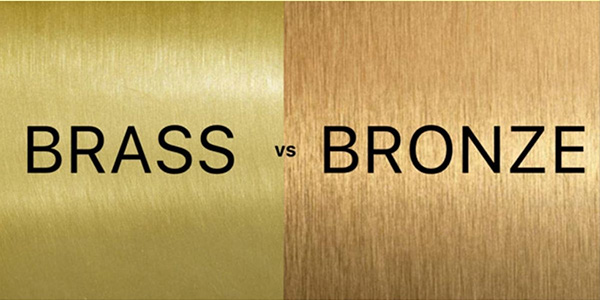CNC machined bronze parts stand for a peak of precision and quality in contemporary manufacturing, flawlessly blending the old-time appeal of bronze with advanced computer mathematical control innovation. The critical mix of copper and tin, and in some cases other alloying aspects, makes bronze an ideal choice for several sectors, including automotive, aerospace, marine, and ornamental applications.
The process of CNC machining entails using pre-programmed computer software application to regulate machining devices, which are made use of to develop parts from a range of materials, consisting of bronze. The precision offered by CNC makers is remarkable; they can regularly create bronze parts that comply with specific specs, making certain harmony and high quality across sets. The programmability of CNC devices enables designers and engineers to produce complex layouts that would certainly be prohibitively complex and time-consuming making use of manual machining. This capability is particularly useful in markets where high accuracy is crucial, such as aerospace and clinical gadgets, where even small variances from specifications can lead to significant functional failures or safety hazards.
Bronze exhibits a level of machinability that boosts its appeal for CNC machining. The tooling used in CNC machining for bronze usually consists of high-speed steel or carbide tools designed to preserve sharp reducing sides, guaranteeing that the ended up parts maintain thorough features and smooth surfaces.
Check out CNC machined bronze parts the cutting-edge globe of CNC machined bronze parts, where the timeless elegance of bronze satisfies cutting-edge precision production, providing unmatched top quality, flexibility, and sustainability for varied applications across numerous industries.
One of the main advantages of CNC machined bronze parts is the reduction in production preparation. Traditional manufacture techniques may call for comprehensive hands-on labor and taxing procedures, such as welding or assembly of different products. On the other hand, CNC machining can produce complex bronze elements in a single process, significantly quickening manufacturing. In addition, CNC machining removes the variability of human operation, resulting in less flaws, much less waste and increased productivity. This performance equates straight to decrease costs and faster turn-around times for services, allowing them to react promptly to market needs and changes.
In enhancement to effectiveness and accuracy, CNC machined bronze parts supply flexibility in layout. The capacity to easily configure and modify designs within the CNC software enables manufacturers to rapidly adjust to customer requirements or style adjustments.
The rust resistance of bronze is a characteristic that charms to markets dealing with rough atmospheres, such as the aquatic market. For applications such as ship fittings, props, and undersea fasteners, CNC machined bronze parts hold a considerable advantage due to their toughness in deep sea and severe conditions, making certain long life and reliability, thus improving overall operational effectiveness.
Sustainability is an increasingly essential problem in modern production, and CNC machined bronze parts can add favorably to this element. Bronze is an extremely recyclable product, and the machining process permits for effective product usage, reducing waste.
As we check out the future of CNC machined bronze parts, a number of fads arise that will certainly form the landscape of bronze construction and usage. The increase of additive production innovations, for instance, has introduced brand-new opportunities for integrating products and improving manufacturing capacities. Hybrid manufacturing strategies that incorporate CNC machining with additive procedures can raise performance and lower product prices while satisfying increasingly intricate geometries. The push for automation within the sector aligns well with the capabilities of CNC machining, giving additional optimization for manufacturing workflows.
In addition, the unification of synthetic knowledge in CNC machining operations holds guarantee for making the most of performance and precision. AI systems can learn from previous operations, predict upkeep needs, and even optimize machining courses, further elevating the high quality of CNC machined bronze parts. This technological integration can lead to substantial developments in enhancing and decreasing functional prices item high quality. As the industry remains to introduce, the function of CNC machining in generating bronze parts will likely increase, bring about brand-new applications and chances to check out.
In the realm of item growth, developers and designers regularly transform to CNC machined bronze parts for prototype creation. Trial and error with different bronze alloys can also yield helpful results, permitting for customized product features specific to the demands of a specific application.
Recognizing client needs is vital for any kind of production business, and CNC machining offers this requirement well. As companies look for to distinguish themselves in progressively open markets, the capability to personalize and create one-of-a-kind bronze components in action to specific customer demands or market trends can create considerable advantages. The joint effort in between producers and consumers in expressing design requires lead to performances that profit both parties and foster more powerful company partnerships built on trust fund and quality control.
Explore logitech k580 vs k380 the cutting-edge globe of CNC machined bronze parts, where the timeless style of bronze meets sophisticated precision production, providing unmatched quality, convenience, and sustainability for varied applications across numerous markets.
CNC machined bronze parts encompass a wide extent of applications, varying from commercial machinery to artistic sculptures. The capacity to make top quality, intricate layouts makes them suitable in sectors as differed as vehicle elements, music instruments, precious jewelry, and historic remediation tasks. Each application demands various characteristics from the bronze, showcasing the product’s flexibility throughout differing obstacles and atmospheres. The charm of bronze is mirrored in the aesthetic allure of ended up pieces, which can be stressed through numerous surface treatments, contributing to both capability and visual allure.
Looking ahead, the need for very crafted and precision-crafted bronze parts is expected to climb as sectors continue to welcome sophisticated production. The flexibility, toughness, and ageless appeal of bronze materials guarantee that they continue to be a staple in many applications. As CNC machining technologies develop, suppliers will be equipped to satisfy progressively strict quality criteria while delivering products that not only serve functional functions but also improve the overall design of systems and settings.
In recap, CNC machined bronze parts indicate the harmonious mix of practice and technology, merging the abundant background of bronze as a material with the most current innovations in manufacturing modern technology. As CNC machining continues to enhance and progress, it is specific that the future of bronze production will be marked by increased intricacy, enhanced sustainability efforts, and cooperation in between manufacturers and consumers in the quest of quality.






